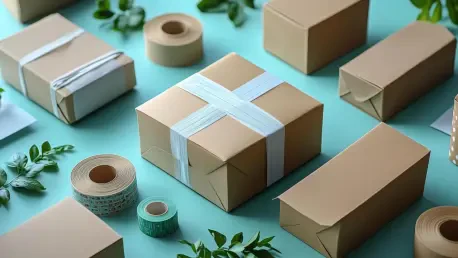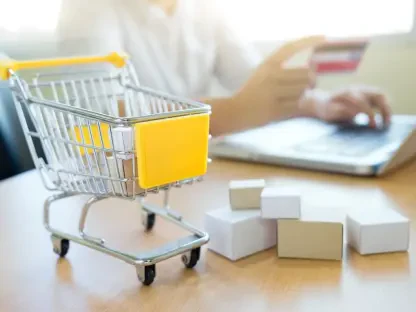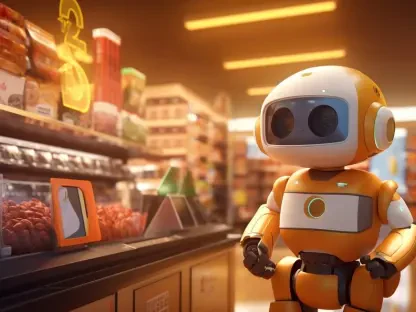Welcome to an insightful conversation on sustainability in the retail and consumer goods industry. Today, I’m thrilled to speak with Zainab Hussain, an e-commerce strategist with deep expertise in customer engagement and operations management. With a keen focus on sustainable practices, Zainab offers a unique perspective on how companies can drive environmental responsibility while meeting consumer needs. In this interview, we’ll explore innovative packaging solutions, the role of collaboration in achieving sustainability goals, and the tools and strategies that are shaping a greener future in retail.
What inspired the push toward sustainable packaging innovations in the industry, and how have you seen this shift impact consumer products?
The drive for sustainable packaging really comes from a growing awareness of environmental challenges and consumer demand for greener options. People are more conscious now about plastic waste and carbon footprints, and that’s pushed companies to rethink their approach. For example, transitioning to recyclable materials isn’t just about meeting regulations—it’s about aligning with customer values. I’ve seen firsthand how these changes, like moving away from hard-to-recycle plastics, not only reduce waste but also build stronger brand loyalty. It’s a win-win when done thoughtfully.
How do companies balance the need to protect products with the goal of using eco-friendly materials in packaging redesigns?
Balancing protection and sustainability is a complex puzzle. You can’t compromise on product safety or shelf life, so it often involves testing new materials extensively to ensure they meet durability standards. For instance, switching to paper-based or recycled materials requires understanding how they hold up under different conditions like humidity or transport stress. I’ve worked with teams that prioritize iterative design—prototyping and refining until the packaging checks both boxes. It’s about innovation, but also about not cutting corners on quality.
Can you share some of the biggest challenges faced when collaborating across supply chains to implement sustainable changes?
Collaboration across supply chains is critical but incredibly challenging. You’re dealing with multiple stakeholders—suppliers, manufacturers, retailers—all with different priorities and timelines. One major hurdle is aligning everyone on the cost implications; sustainable materials can be pricier upfront, and not everyone sees the long-term value right away. I’ve also encountered logistical issues, like ensuring a steady supply of recycled materials. It takes patience, clear communication, and sometimes even re-educating partners on why these changes matter for the bigger picture.
How do organizations measure the environmental impact of reducing plastic waste, and what metrics do you think are most meaningful?
Measuring environmental impact starts with tangible metrics like the volume of plastic eliminated annually—think pounds or tons of waste diverted from landfills. But it’s also about lifecycle assessments, looking at how much energy or emissions are saved by using recycled versus virgin materials. In my experience, the most meaningful metrics are those that tie directly to broader goals, like reductions in greenhouse gas emissions. Long-term tracking is key too—monitoring how these changes ripple out to affect recycling rates or consumer behavior over years, not just months.
What role do proprietary tools or technologies play in embedding sustainability into product development processes?
Proprietary tools are game-changers because they systematize sustainability. They allow R&D teams to evaluate environmental impacts at every stage of product design—from material selection to end-of-life disposal. I’ve seen how these tools can flag high-impact areas early, like identifying a component that’s not recyclable, and suggest alternatives. They often integrate data on carbon footprints or resource use, making decision-making more science-driven. It’s about embedding a mindset of responsibility into innovation, rather than treating it as an afterthought.
How important is collaboration with retailers in achieving sustainability goals, and can you share an example of how this partnership drives progress?
Collaboration with retailers is absolutely essential. Retailers often set ambitious sustainability targets, and suppliers can help meet those by innovating at the product level. I’ve seen partnerships where a retailer’s push for less plastic in their stores inspired a supplier to redesign packaging entirely, cutting waste significantly. These relationships create a feedback loop—retailers provide insights on customer preferences, while suppliers bring technical know-how. It’s a powerful synergy that can accelerate industry-wide transformation when both sides are committed.
What strategies have proven most effective in reducing reliance on virgin plastics across a product portfolio?
Reducing virgin plastic starts with a clear strategy—prioritizing post-consumer recycled materials wherever possible and redesigning products to use less plastic overall. I’ve found that setting incremental targets helps; for instance, aiming for a percentage reduction year by year keeps momentum without overwhelming teams. Another effective approach is investing in alternative materials, like bio-based options, though scalability can be an issue. It’s also about engaging suppliers early to ensure a consistent flow of recycled content. Persistence and adaptability are key to making real progress.
How do you see the global rollout of sustainable packaging evolving, and what steps can ensure success across diverse markets?
Global rollouts of sustainable packaging are tricky because markets differ in infrastructure, regulations, and consumer expectations. Success hinges on customization—understanding that what works in one region might not in another due to recycling capabilities or cultural attitudes. I believe piloting changes in smaller markets first helps iron out kinks before scaling up. It’s also vital to educate consumers and local partners about the benefits of these changes, ensuring buy-in. Strong coordination across regions, paired with flexibility, can turn a daunting rollout into a smooth transition.
What’s your forecast for the future of sustainability in retail and e-commerce over the next decade?
I’m optimistic about the future of sustainability in retail and e-commerce. I think we’ll see a huge push toward circular economy models—think reusable packaging or take-back programs becoming mainstream. Technology will play a bigger role, with AI and data analytics helping optimize supply chains for lower emissions. I also expect stricter regulations globally, which will force faster innovation. Consumers will continue to drive change, demanding transparency and holding brands accountable. It’s going to be a dynamic decade, with sustainability moving from a nice-to-have to a core business imperative.








